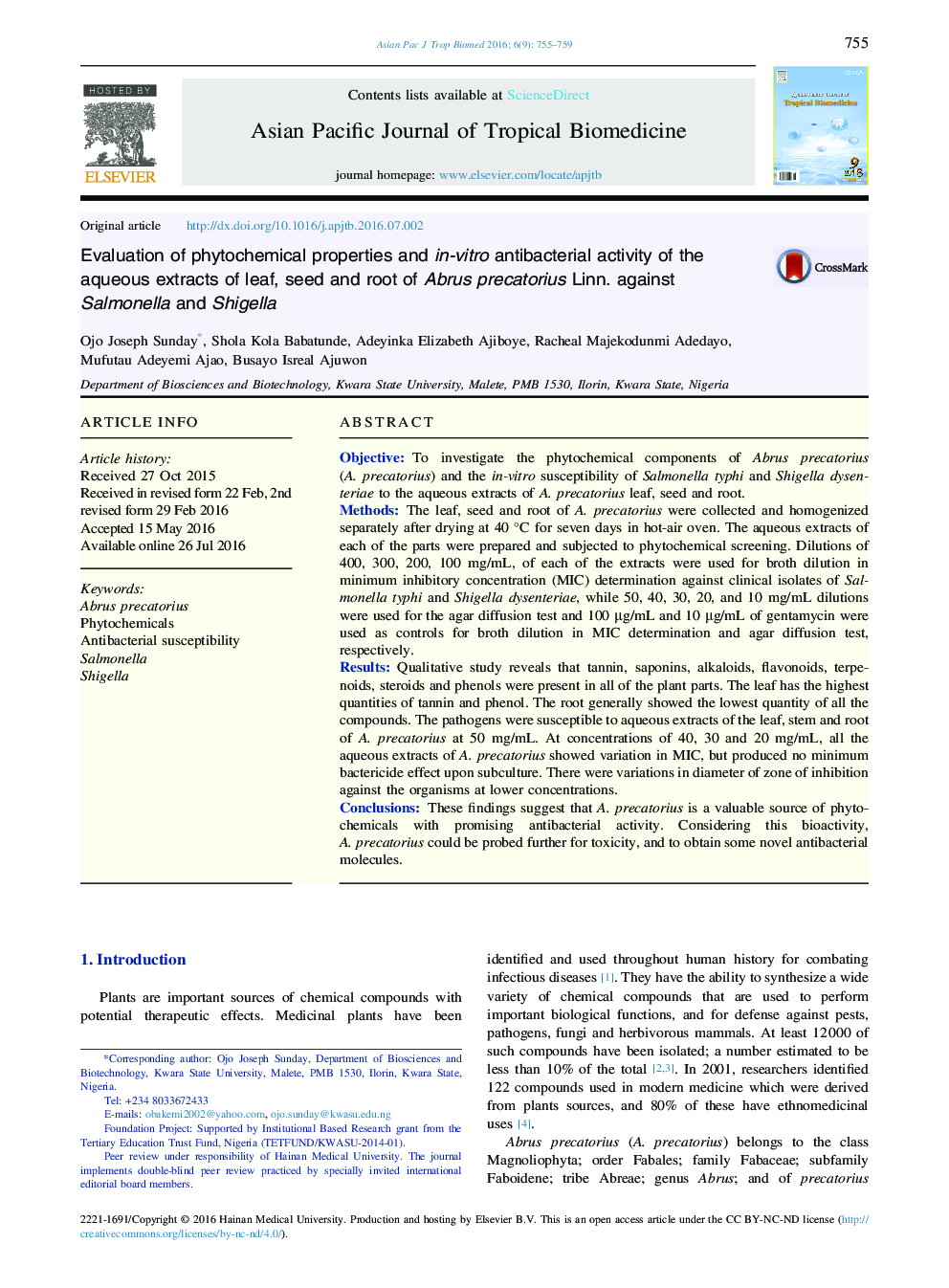| کد مقاله | کد نشریه | سال انتشار | مقاله انگلیسی | نسخه تمام متن |
|---|---|---|---|---|
| 2032273 | 1542861 | 2016 | 5 صفحه PDF | دانلود رایگان |

ObjectiveTo investigate the phytochemical components of Abrus precatorius (A. precatorius) and the in-vitro susceptibility of Salmonella typhi and Shigella dysenteriae to the aqueous extracts of A. precatorius leaf, seed and root.MethodsThe leaf, seed and root of A. precatorius were collected and homogenized separately after drying at 40 °C for seven days in hot-air oven. The aqueous extracts of each of the parts were prepared and subjected to phytochemical screening. Dilutions of 400, 300, 200, 100 mg/mL, of each of the extracts were used for broth dilution in minimum inhibitory concentration (MIC) determination against clinical isolates of Salmonella typhi and Shigella dysenteriae, while 50, 40, 30, 20, and 10 mg/mL dilutions were used for the agar diffusion test and 100 μg/mL and 10 μg/mL of gentamycin were used as controls for broth dilution in MIC determination and agar diffusion test, respectively.ResultsQualitative study reveals that tannin, saponins, alkaloids, flavonoids, terpenoids, steroids and phenols were present in all of the plant parts. The leaf has the highest quantities of tannin and phenol. The root generally showed the lowest quantity of all the compounds. The pathogens were susceptible to aqueous extracts of the leaf, stem and root of A. precatorius at 50 mg/mL. At concentrations of 40, 30 and 20 mg/mL, all the aqueous extracts of A. precatorius showed variation in MIC, but produced no minimum bactericide effect upon subculture. There were variations in diameter of zone of inhibition against the organisms at lower concentrations.ConclusionsThese findings suggest that A. precatorius is a valuable source of phytochemicals with promising antibacterial activity. Considering this bioactivity, A. precatorius could be probed further for toxicity, and to obtain some novel antibacterial molecules.
Journal: Asian Pacific Journal of Tropical Biomedicine - Volume 6, Issue 9, September 2016, Pages 755–759